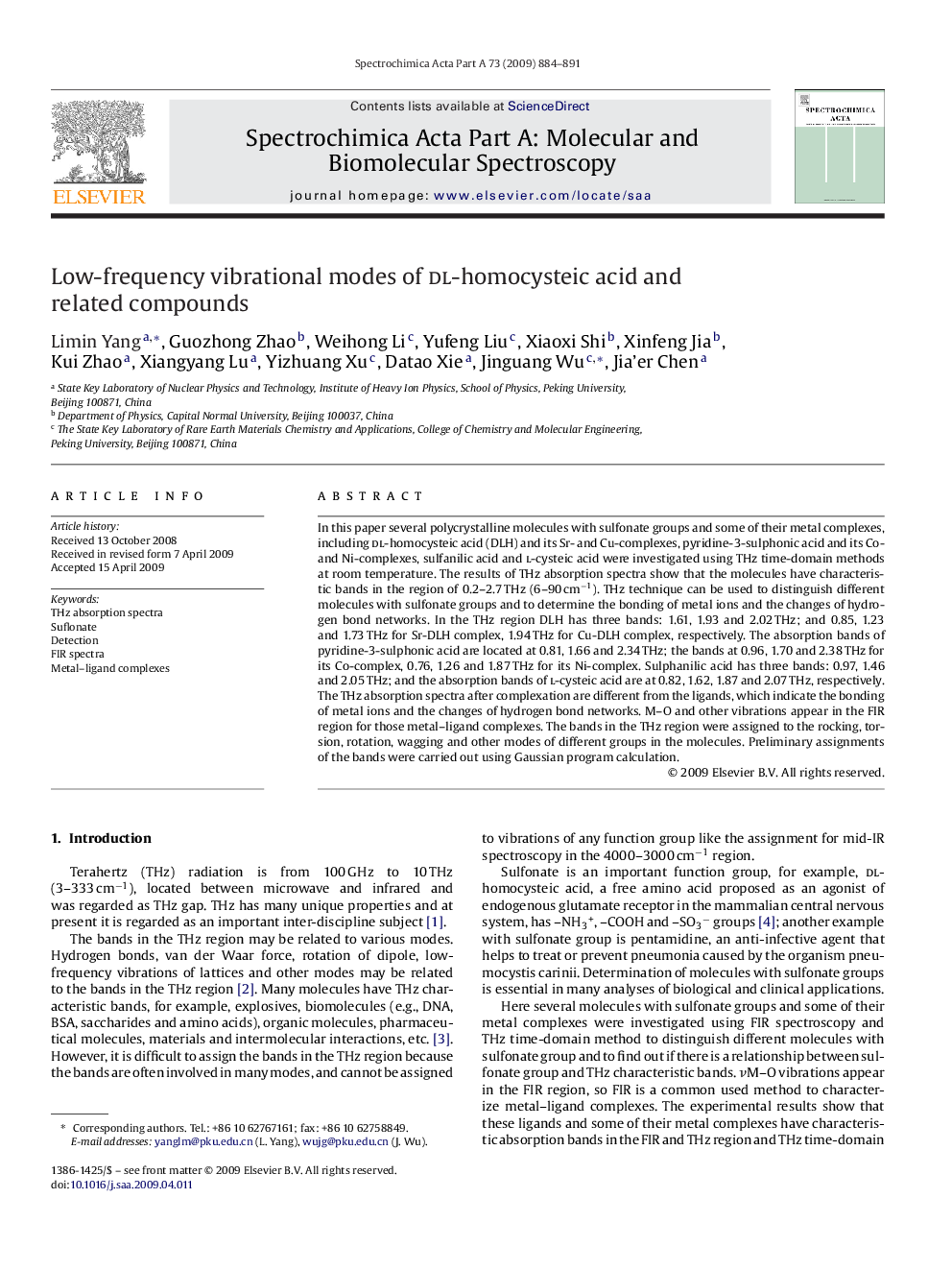| Article ID | Journal | Published Year | Pages | File Type |
|---|---|---|---|---|
| 1233059 | Spectrochimica Acta Part A: Molecular and Biomolecular Spectroscopy | 2009 | 8 Pages |
Abstract
In this paper several polycrystalline molecules with sulfonate groups and some of their metal complexes, including dl-homocysteic acid (DLH) and its Sr- and Cu-complexes, pyridine-3-sulphonic acid and its Co- and Ni-complexes, sulfanilic acid and l-cysteic acid were investigated using THz time-domain methods at room temperature. The results of THz absorption spectra show that the molecules have characteristic bands in the region of 0.2-2.7Â THz (6-90Â cmâ1). THz technique can be used to distinguish different molecules with sulfonate groups and to determine the bonding of metal ions and the changes of hydrogen bond networks. In the THz region DLH has three bands: 1.61, 1.93 and 2.02Â THz; and 0.85, 1.23 and 1.73Â THz for Sr-DLH complex, 1.94Â THz for Cu-DLH complex, respectively. The absorption bands of pyridine-3-sulphonic acid are located at 0.81, 1.66 and 2.34Â THz; the bands at 0.96, 1.70 and 2.38Â THz for its Co-complex, 0.76, 1.26 and 1.87Â THz for its Ni-complex. Sulphanilic acid has three bands: 0.97, 1.46 and 2.05Â THz; and the absorption bands of l-cysteic acid are at 0.82, 1.62, 1.87 and 2.07Â THz, respectively. The THz absorption spectra after complexation are different from the ligands, which indicate the bonding of metal ions and the changes of hydrogen bond networks. M-O and other vibrations appear in the FIR region for those metal-ligand complexes. The bands in the THz region were assigned to the rocking, torsion, rotation, wagging and other modes of different groups in the molecules. Preliminary assignments of the bands were carried out using Gaussian program calculation.
Keywords
Related Topics
Physical Sciences and Engineering
Chemistry
Analytical Chemistry
Authors
Limin Yang, Guozhong Zhao, Weihong Li, Yufeng Liu, Xiaoxi Shi, Xinfeng Jia, Kui Zhao, Xiangyang Lu, Yizhuang Xu, Datao Xie, Jinguang Wu, Jia'er Chen,
